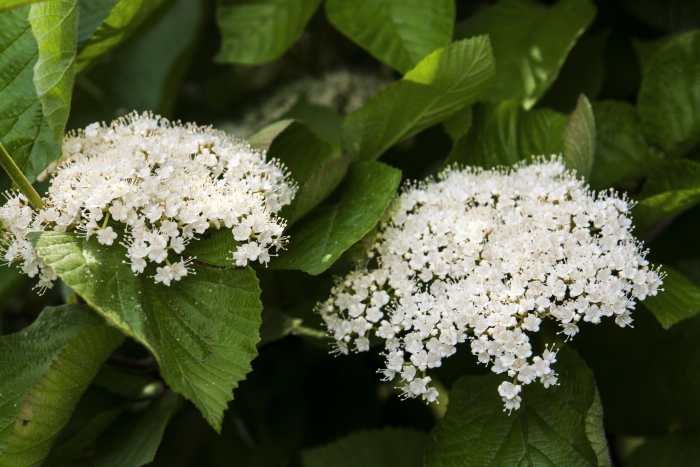Linden Arrowwood
(Viburnum dilatatum)
Linden Arrowwood (Viburnum dilatatum)
/
/

bastus917
CC BY-SA 2.0
Image By:
bastus917
Recorded By:
Copyright:
CC BY-SA 2.0
Copyright Notice:
Photo by: bastus917 | License Type: CC BY-SA 2.0 | License URL: https://creativecommons.org/licenses/by-sa/2.0 | Uploader: Declangi | Publisher: Wikimedia Commons | Title: Viburnum_dilatatum_2.jpg | Notes: User created page with UploadWizard |














































































Estimated Native Range
Summary
Viburnum dilatatum, commonly known as Linden Arrowwood, is a deciduous shrub native to forest margins, stream banks, and open woodlands in China, Korea and Japan. It typically grows up to 3 meters tall and wide, with a rounded form. The creamy white flowers are small, yet showy, blooming in clusters from May to early June after the leaves have emerged. In autumn, the shrub produces attractive red berries that mature to black, providing interest and food for wildlife. Linden Arrowwood is valued for its ornamental features, including its flowers, berries, and vibrant red fall foliage.
This shrub is often used for mass plantings, hedges, and as a specimen in residential gardens. It thrives in moist, fertile, slightly acidic to neutral soil. While it prefers full sun, it can also grow well in part shade and tolerates warm climates. Linden Arrowwood is easy to transplant and establishes well from cuttings; seeds may require stratification. Planting in groups can enhance fruit production. However, it is considered potentially invasive in some regions, such as the mid-Atlantic states of the U.S., and should be planted with caution. It adapts to a range of soil drainage conditions and requires medium amounts of water.CC BY-SA 4.0
This shrub is often used for mass plantings, hedges, and as a specimen in residential gardens. It thrives in moist, fertile, slightly acidic to neutral soil. While it prefers full sun, it can also grow well in part shade and tolerates warm climates. Linden Arrowwood is easy to transplant and establishes well from cuttings; seeds may require stratification. Planting in groups can enhance fruit production. However, it is considered potentially invasive in some regions, such as the mid-Atlantic states of the U.S., and should be planted with caution. It adapts to a range of soil drainage conditions and requires medium amounts of water.CC BY-SA 4.0
Plant Description
- Plant Type: Shrub
- Height: 8-10 feet
- Width: 6-8 feet
- Growth Rate: Moderate
- Flower Color: Cream, White
- Flowering Season: Spring, Summer
- Leaf Retention: Deciduous
Growth Requirements
- Sun: Full Sun, Part Shade
- Water: Medium
- Drainage: Slow, Medium, Fast
Common Uses
Bee Garden, Bird Garden, Border Plant, Butterfly Garden, Deer Resistant, Drought Tolerant, Fragrant, Hedges, Hummingbird Garden, Rabbit Resistant, Showy Flowers, Street Planting
Natural Habitat
Forest margins, stream banks, and open woodlands
Other Names
Common Names: Linden Viburnum, Gamazumi, 가막살나무
Scientific Names: , Viburnum dilatatum, Viburnum dilatatum var. macrophyllum, Viburnum brevipes, Viburnum dilatatum var. fulvotomentosum, Viburnum hizenense, Viburnum dilatatum f. xanthocarpum, Viburnum fulvotomentosum, Viburnum dilatatum f. hispidum, Viburnum dilatatum f. nikoense
GBIF Accepted Name: Viburnum dilatatum Thunb.